Making DNA sequences being passed through nanochannels a thousand times thinner than a human hair to the point that they take on the form of diminutive spaghetti. This is an innovative technique, known as DNA stretching, and is one of the lines of research in which CIC microGUNE is working, and about which they have already published two scientific articles and are shortly to apply for a patent.
Apr 5th, 2011
Read more
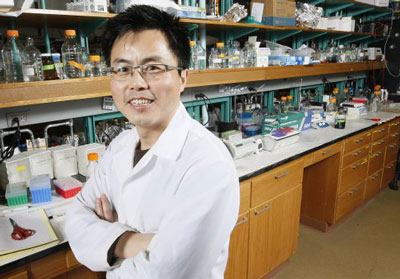 A Purdue University biochemist has demonstrated a process using nanotechnology to better assess whether cancer drugs hit their targets, which may help reduce drug side effects.
A Purdue University biochemist has demonstrated a process using nanotechnology to better assess whether cancer drugs hit their targets, which may help reduce drug side effects.
Apr 5th, 2011
Read more
A very simple bench-top technique that uses the force of acoustical waves to create a variety of 3D structures will benefit the rapidly expanding field of metamaterials and their myriad applications - including "invisibility cloaks".
Apr 5th, 2011
Read more
Using an advanced form of a rubber stamp, researchers have developed a way to adhere an ultra-thin antibacterial coating to a wound.
Apr 5th, 2011
Read more
The Arts-Sciences Workshop, a common innovation initiative between CEA-Grenoble and the Hexagone Scene Nationale de Meylan, in partnership with the Cultural Center for Scientific and Industrial Engineering (CCSTI) in Grenoble, has issued a call for projects.
Apr 5th, 2011
Read more
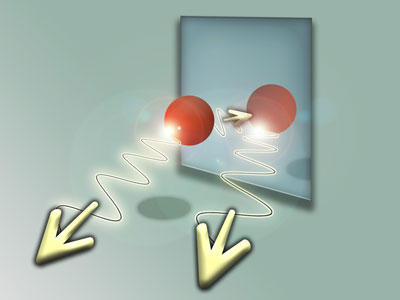 Standing in front of a mirror, we can easily tell apart ourselves from our mirror image. The mirror does not affect our motion in any way. For quantum particles, this is much more complicated. In a spectacular experiment in the labs of the University of Heidelberg, a group of physicists at the University Heidelberg, together with colleagues at TU Munich and TU Vienna extended a gedankenexperiment by Einstein and managed to blur the distinction between a particle and its mirror image.
Standing in front of a mirror, we can easily tell apart ourselves from our mirror image. The mirror does not affect our motion in any way. For quantum particles, this is much more complicated. In a spectacular experiment in the labs of the University of Heidelberg, a group of physicists at the University Heidelberg, together with colleagues at TU Munich and TU Vienna extended a gedankenexperiment by Einstein and managed to blur the distinction between a particle and its mirror image.
Apr 5th, 2011
Read more
Nanomaterials are causing a revolution in fields as far apart as medicine, energy systems and consumer products. Despite their enormous potential, the production, use and disposal of these materials can entail risks for humans and the environment. The National Research Programme "Opportunities and risks of nanomaterials" (NRP 64) aims to identify both the risks and the opportunities of nanomaterials for human health, the environment and natural resources.
Apr 5th, 2011
Read more
To further increase the efficiency of solar collectors, researchers have mixed nanoparticles into the heat-transfer oils normally used in solar thermal power plants.
Apr 5th, 2011
Read more
Pioneering researchers in Europe have done what no one has been able to do: surpass the limit on the sensitivity of a quantum measurement. The result could play a key role in interferometry and quantum limits of measurement.
Apr 4th, 2011
Read more
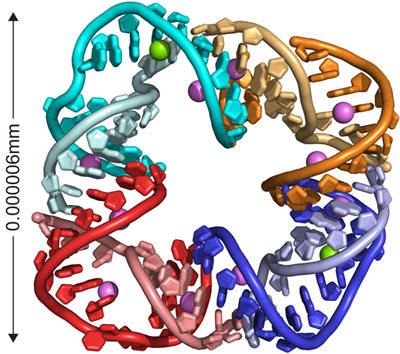 Chemists at UC San Diego have produced the first high resolution structure of a nano-scale square made from ribonucleic acid, or RNA.
Chemists at UC San Diego have produced the first high resolution structure of a nano-scale square made from ribonucleic acid, or RNA.
Apr 4th, 2011
Read more
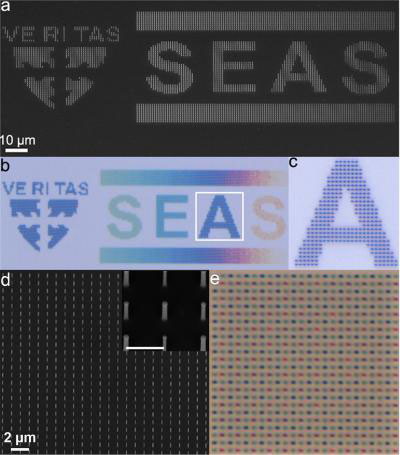 Surprising phenomenon may lead to greater sensitivity in image sensor devices.
Surprising phenomenon may lead to greater sensitivity in image sensor devices.
Apr 4th, 2011
Read more
Auf der am heutigen 4. April beginnenden Hannover Messe ist auch die Fachhochschule Brandenburg mit einem Exponat vertreten. Der Messeauftritt beschaeftigt sich primaer mit der Mitwirkung am internationalen Forschungsprojekt PARAFLUO, das im 7. Forschungsrahmenprogramm der EU gefoerdert wird.
Apr 4th, 2011
Read more
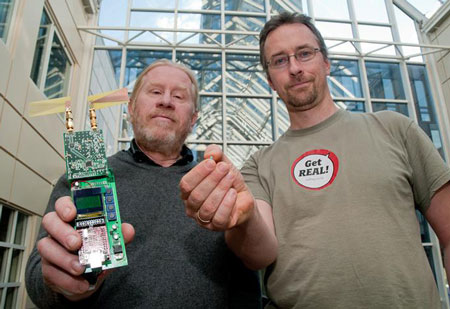 Researchers at the Department of Informatics, University of Oslo, are developing sensors for the future. Their size decreases. They are more robust than today's sensors, communicate wirelessly, and even reduce energy consumption to a minimum. But more important: The researchers are connecting all sensors to the Future Internet.
Researchers at the Department of Informatics, University of Oslo, are developing sensors for the future. Their size decreases. They are more robust than today's sensors, communicate wirelessly, and even reduce energy consumption to a minimum. But more important: The researchers are connecting all sensors to the Future Internet.
Apr 4th, 2011
Read more
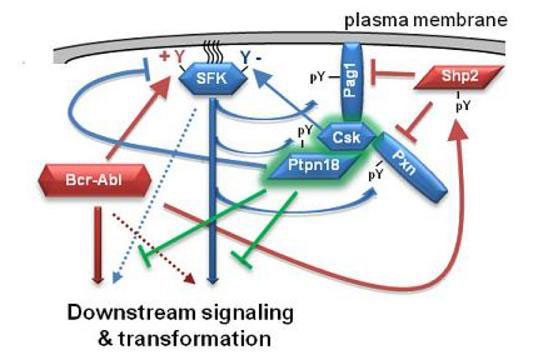 A multidisciplinary team of researchers at UCLA has developed a "roadmap" of the complex signaling processes involved in cancer that could lead to new methods for diagnosing and overcoming such drug resistance.
A multidisciplinary team of researchers at UCLA has developed a "roadmap" of the complex signaling processes involved in cancer that could lead to new methods for diagnosing and overcoming such drug resistance.
Apr 4th, 2011
Read more
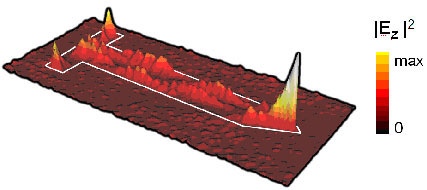 A joint cooperation between three research groups at nanoGUNE (Donostia - San Sebastian, Spain) reports an innovative method to focus infrared light with tapered transmission lines to nanometer-size dimensions. This device could trigger the development of novel chemical and biological sensing tools, including ultra-small infrared spectrometers and lab-on-a-chip integrated biosensors.
A joint cooperation between three research groups at nanoGUNE (Donostia - San Sebastian, Spain) reports an innovative method to focus infrared light with tapered transmission lines to nanometer-size dimensions. This device could trigger the development of novel chemical and biological sensing tools, including ultra-small infrared spectrometers and lab-on-a-chip integrated biosensors.
Apr 4th, 2011
Read more
GLOBALFOUNDRIES, one of the world's leading semiconductor foundries, has signed a strategic long-term partnership on sub-22nm CMOS scaling and GaN-on-Si technology with the nanoelectronics R+D center imec.
Apr 4th, 2011
Read more








 Subscribe to our Nanotechnology News feed
Subscribe to our Nanotechnology News feed